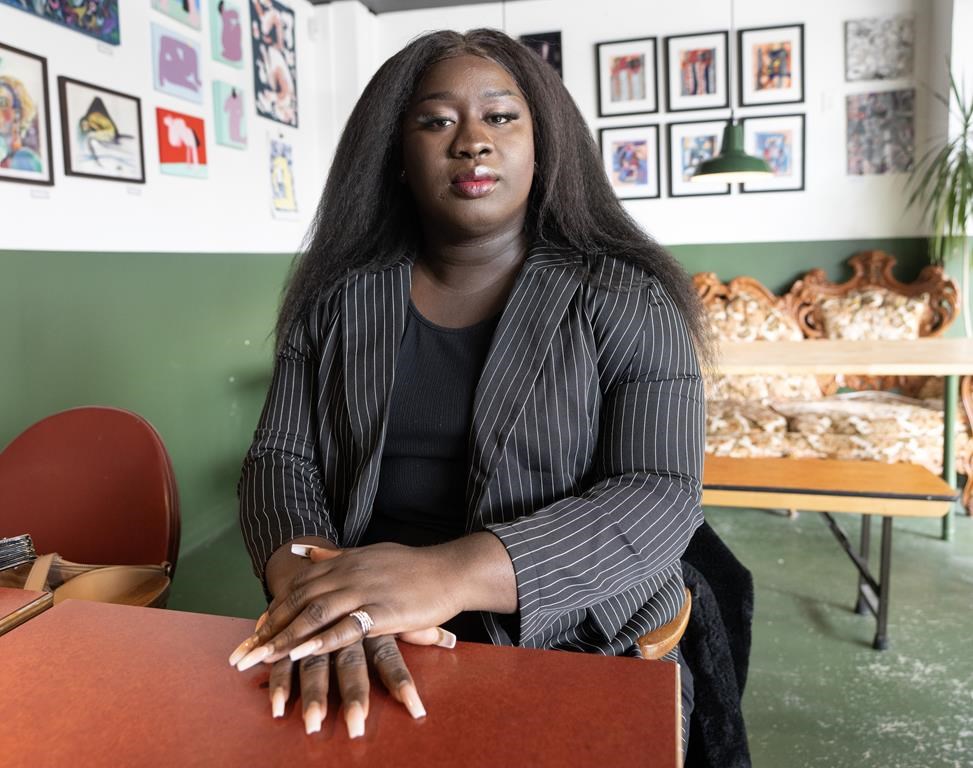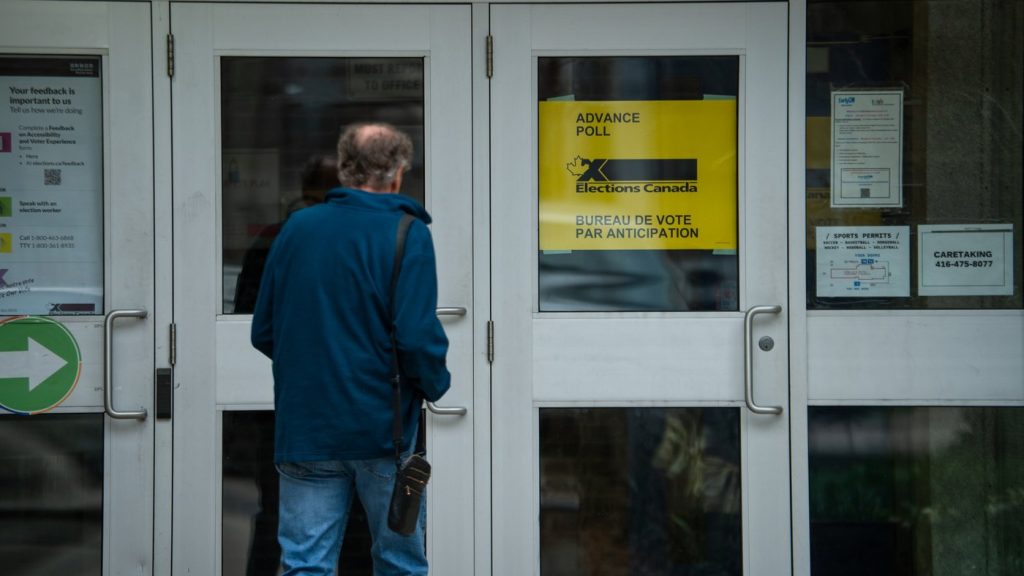Transgender people bear brunt of misinformation about gender identity, experts say

Posted March 18, 2024 2:38 pm.
Last Updated March 18, 2024 2:42 pm.
MONTREAL — Misinformation surrounding gender identity is pervasive and it has a profound impact on the mental health of transgender and non-binary people, advocates say.
Dupré Latour, a trans woman who grew up in West Africa and immigrated to Canada five years ago so she could affirm her gender identity, believes that religion, stereotypes and misconceptions help people justify their hate.
She is saddened that many believe that transgender identity is merely a trend.
“I hear it all the time (that) trans people, there are so many of them,” Latour said.
“But we’ve always been there, it’s just that now, we are in an environment, in a favourable era, but it’s not a trend: these are people who make sacrifices, people who don’t love themselves, who look in the mirror and hate themselves and who have no choice to go through this to live their lives in the image of what society expects.”
Advocates have for years said that misinformation clouds much of the debate over transgender rights in Canada, especially when it comes to youth. Saskatchewan and New Brunswick brought in rules last year requiring parental consent for students 16 and younger to change their names or pronouns at school – rules that have raised Charter rights concerns among critics.
In Alberta, Premier Danielle Smith has promised to enact changes this fall that go beyond parental consent for pronoun and name changes and also include limitations on gender-affirmation surgeries and hormone treatments for teens. Opposition parties and LGBTQ+ groups have accused Smith of relying on myths about transgender medical care and “playing politics” with the proposed legislation.
Not allowing the use of preferred pronouns can heighten levels of anxiety, depression and suicidal thoughts among non-binary and transgender youth, said Annie Pullen Sansfaçon, a professor at the Université de Montréal’s department of social work and a gender identity researcher for the past 15 years.
Openness to gender diversity starts with education, but it’s no small task, she said.
GRIS-Montréal, a community organization, has been holding workshops and conferences in schools about sexual orientation for 30 years. Since 2017, the organization has also broached the realities of gender identity.
Marie Houzeau, the organization’s general manager, said the same prejudices and myths that existed in relation to homosexuality in the past are now transposed to gender identity, even though it’s established that one cannot influence the orientation or gender identity of someone else.
“They are the same comments that we hear: that talking about it will confuse young people and … young people will become like that if we talk about it,” Houzeau said. “We said that about sexual orientation 25 years ago, and we’re saying that about gender identity now.”
Her organization meets about 30,000 young people yearly in Greater Montreal. The demand for conferences on gender identity is so strong that Houzeau believes she could triple the number of workshops.
She said there is a huge disparity in the amount of reliable information circulating in schools.
“We know that young people receive a lot of information through social media, some follow influencers and that constitutes their main source of information,” Houzeau said.
“We also know the phenomenon of algorithms and echo chambers that ensure that young people only receive information that is in line with what they already think, it can lead to misinformation for some people if they follow people who themselves have opinions based on misinformation.”
On the other hand, some youth have the right information and can share it with their peers to help debunk transition and treatment myths, she said.
Pullen Sansfaçon said one common misconception is about puberty blockers — medication prescribed to adolescents who are beginning a gender transition. She stressed these drugs are not given to children before puberty hits.
The medication is not permanent and simply slows down the puberty process, buying time for a young person to weigh their decision more carefully. If a person stops taking it, puberty resumes its course within a few months, Pullen Sansfaçon said.
According to recent studies, gender-affirming care has psychosocial and mental health benefits for youth. During adolescence, hormone blockers reduce the risk of suicidal ideation.
“These are medications that can save a person’s life,” Pullen Sansfaçon said.
Some will eventually opt for gender-affirming hormone therapy, taking testosterone or estrogen, depending on the gender, and blockers allow youth the time to mature and decide in due course.
It’s the same thing for gender-affirming surgeries. The Canadian Paediatric Society says age cutoffs for funding such surgeries vary by province and territory in Canada, but genital reconstructive surgery is restricted to individuals who are 18 or older. Top surgery to remove or augment breast tissue is generally limited to those 16 and older.
A followup with a psychologist is also required. Sam Lajeunesse, a 43-year-old trans man, can attest to its benefits.
“Before I even realized I was a trans person, I had an issue with my chest,” Lajeunesse said. “At the time I didn’t even know it was possible to have a mastectomy, but if I knew if I could unscrew them and put them in a drawer and leave them there, I would have done it as a teenager.”
After a six-month followup with a psychologist, he asked for a doctor’s letter supporting his decision to have a mastectomy and hormonal treatment. While he had apprehensions about the speed with which hormonal injections would take effect and their potential side-effects, he has no regrets.
Pullen Sansfaçon said that some effects of hormone therapy can be reversed, sometimes through corrective surgery.
Medical and surgical help for young transgender and non-binary people isn’t new; standards of care have been set by the World Professional Association for Transgender Health since 1998 and have been updated over the years.
“Currently, the scientific consensus is that being able to support young people in making informed decisions regarding gender-affirming care and having access to it seems to be the best path to take to be able to improve the mental health of these young people,” Pullen Sansfaçon said.
Education is key.
Lajeunesse and Latour describe discussions about their gender identity as a sort of eternal “coming out.” Some people say hurtful things unintentionally because they aren’t aware, but others do so deliberately. Both said they’re happy to answer questions when asked respectfully.
Lajeunesse said 13 years after transitioning, he no longer has those conversations with close friends or family, but they did come up before.
“They had questions which I sometimes answered, other times I directed people to the appropriate sources of information,” he said.
For Latour, the discussions can be tough.
“Often, people will say, ‘You’re a man,’ but no, I’m not a man, I’m a trans woman,” she said with pride. “And sometimes, it’s heavy to always have to explain that you can’t address me as a man.”
This report by The Canadian Press was first published March 18, 2024.
Canadian Press health coverage receives support through a partnership with the Canadian Medical Association. CP is solely responsible for this content.
Katrine Desautels, The Canadian Press








